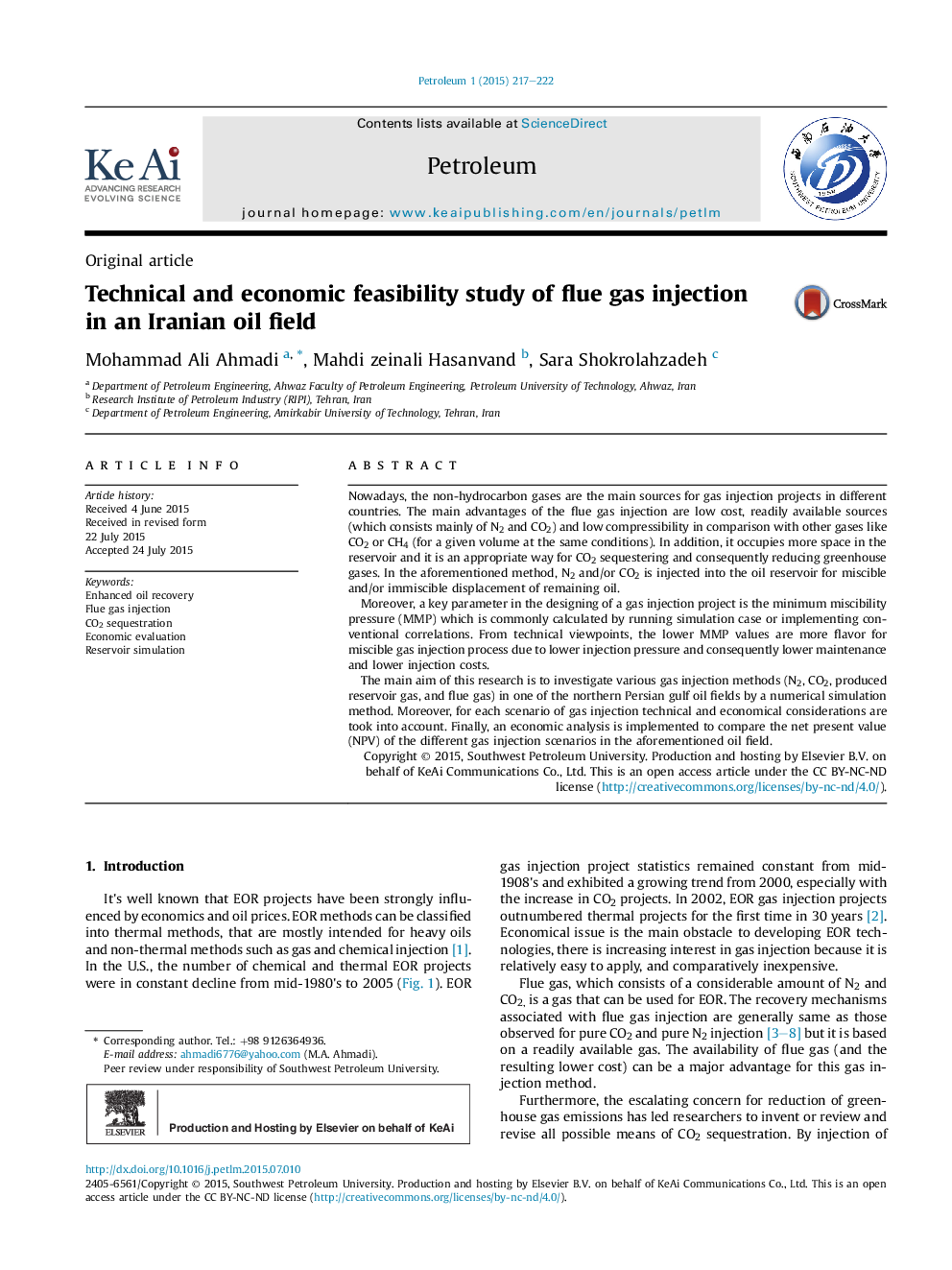| Article ID | Journal | Published Year | Pages | File Type |
|---|---|---|---|---|
| 852843 | Petroleum | 2015 | 6 Pages |
Nowadays, the non-hydrocarbon gases are the main sources for gas injection projects in different countries. The main advantages of the flue gas injection are low cost, readily available sources (which consists mainly of N2 and CO2) and low compressibility in comparison with other gases like CO2 or CH4 (for a given volume at the same conditions). In addition, it occupies more space in the reservoir and it is an appropriate way for CO2 sequestering and consequently reducing greenhouse gases. In the aforementioned method, N2 and/or CO2 is injected into the oil reservoir for miscible and/or immiscible displacement of remaining oil.Moreover, a key parameter in the designing of a gas injection project is the minimum miscibility pressure (MMP) which is commonly calculated by running simulation case or implementing conventional correlations. From technical viewpoints, the lower MMP values are more flavor for miscible gas injection process due to lower injection pressure and consequently lower maintenance and lower injection costs.The main aim of this research is to investigate various gas injection methods (N2, CO2, produced reservoir gas, and flue gas) in one of the northern Persian gulf oil fields by a numerical simulation method. Moreover, for each scenario of gas injection technical and economical considerations are took into account. Finally, an economic analysis is implemented to compare the net present value (NPV) of the different gas injection scenarios in the aforementioned oil field.
